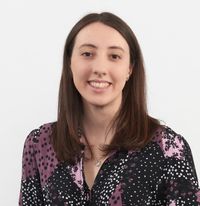Will Labour change the rules on pension tax relief?
Pension tax relief costs the government almost £50 billion a year – but new reports suggest cuts are off the table at the upcoming Budget


Prime minister Keir Starmer has previously warned that the upcoming Labour Budget will be “painful” and involve “difficult decisions”, prompting weeks of speculation that pension tax relief could be cut.
But a report from The Times this weekend said Labour is expected to abandon its plans after senior Treasury officials told the chancellor the policy would hit public sector workers on "relatively modest incomes".
Under current rules, savers are entitled to tax relief on money they pay into their pension pot up to an annual maximum. This is essentially a refund at your marginal rate. If you are a basic-rate taxpayer, you get 20%, while higher and additional-rate taxpayers are entitled to 40% and 45% respectively.
MoneyWeek
Subscribe to MoneyWeek today and get your first six magazine issues absolutely FREE

Sign up to Money Morning
Don't miss the latest investment and personal finances news, market analysis, plus money-saving tips with our free twice-daily newsletter
Don't miss the latest investment and personal finances news, market analysis, plus money-saving tips with our free twice-daily newsletter
The policy is a generous perk which encourages retirement saving but critics argue it is unfair, with a higher rate of relief going to those on higher salaries.
It also comes with a hefty price tag – pension tax relief cost the government £48.7 billion in 2022/23, according to the latest HMRC data, with almost two-thirds of this sum enjoyed by higher and additional-rate taxpayers.
Before this weekend's report in The Times, many were concerned that the cost of the policy would highlight it as a potential target for Rachel Reeves as she looks for ways to plug a £22 billion hole in the public finances. But cutting pension tax relief for higher earners isn’t as simple as it might sound.
The way many schemes are set up means the only way for Labour to reduce the relief for higher earners would be to apply a tax charge. This shift could prove unpopular and risk alienating public sector workers on final salary pension schemes, among others.
This move would also be counterintuitive given the government has just offered public sector workers a pay rise in an attempt to end industrial action.
Against this backdrop, we take a closer look at pension tax relief. How would a rule change impact you and is it really off the table?
Pension tax relief: what would a change of rules look like?
If the government did decide to cut pension tax relief for higher earners, one option would be to introduce a flat rate of relief for all savers, say 30%. This would increase the amount of relief received by lower earners while cutting the perk for those on bigger salaries.
The challenge with this is that it would be complex to implement.
Tom Selby, director of public policy at AJ Bell, explains that there are two ways of receiving pension tax relief – “net pay” or “relief at source”. The latter wouldn’t be too challenging to deal with but the former would.
A self-invested personal pension (SIPP) is an example of a “relief at source” scheme. With this, you typically receive the 20% relief from HMRC upfront and then claim back any additional entitlement through your tax return.
If a flat rate of 30% pension tax relief was introduced, the government could implement this in "relief at source" schemes by reducing the amount higher earners were allowed to claim back in their annual tax return.
In “net pay” schemes, though, pension contributions come from your pre-tax pay. This means higher and additional-rate taxpayers receive 40% or 45% relief automatically. As such, the only way for the government to reduce the amount of relief for these savers would be to apply a tax charge.
“If, for example, the government decided to set flat rate pension tax relief at 30%, anyone in a DB scheme earning more than £50,270 (the higher-rate income tax threshold) would be hit with a tax charge to reduce their automatic tax relief from 40% to 30%,” Selby tells MoneyWeek.
He adds: “If a higher-rate taxpayer had paid a £10,000 contribution to a net pay scheme in the tax year, they would presumably need to pay a £1,000 tax charge to reduce their tax relief to the required 30%.
“Given public sector workers were up in arms over the impact of the lifetime allowance and annual allowance on their pensions, it’s hard to imagine hiking tax bills for all those saving in a pension and earning over £50,270 would go down particularly well.”
What other pension changes could appear in the Budget?
Cutting pension tax relief could prove too unpopular and complex to implement, but other pension changes could still crop up in the Budget, says Jason Hollands, managing director at wealth management firm Evelyn Partners.
For example, some are concerned that Labour may change the rules on how much tax-free cash savers are allowed to withdraw from their pensions. Others have suggested the government could change inheritance tax rules to bring private pensions into scope.
“The third way the government could generate increased revenues from private pensions would be to levy National Insurance Contributions on the payments employers make into employee pensions,” Hollands adds. “This could raise significant sums, even after netting off the impact on the extra cost for public sector pensions, without employees seemingly noticing any changes on their own wages.”
Finally, while it looks like Labour may have ruled out introducing a flat rate of pension tax relief, it could still consider cutting the annual tax-free pension allowance.
Under current rules, savers can stash up to £60,000 in their pension pot each year (including employer contributions) while still benefitting from tax relief. But cutting this allowance could be another way for the government to raise revenue.
All will be revealed when Reeves delivers her Budget later this month on 30 October.
Get the latest financial news, insights and expert analysis from our award-winning MoneyWeek team, to help you understand what really matters when it comes to your finances.
Katie has a background in investment writing and is interested in everything to do with personal finance, politics, and investing. She previously worked at MoneyWeek and Invesco.
-
 Pundits had a bad 2025 – here's what it means for investors
Pundits had a bad 2025 – here's what it means for investorsThe pundits came in for many shocks in 2025, says Max King. Here is what they should learn from them
-
 The MoneyWeek ETF portfolio – early 2026 update
The MoneyWeek ETF portfolio – early 2026 updateThe MoneyWeek ETF portfolio had a solid year in 2025 and looks well placed for what the next 12 months may bring
